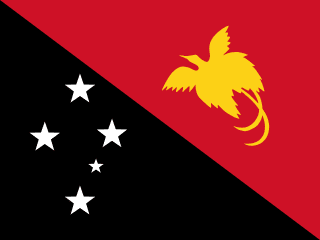Papua New Guinea - Introduction

Here, let us take a look at some of the important facts about the country Papua New Guinea. Papua New Guinea (officially: Independent State of Papua New Guinea) is a country in Oceania, precisely in Melanesia, with a population of about 10.6 Millions inhabitants today (2024-09-15). The capital city of Independent State of Papua New Guinea is Port Moresby, and the official country TLD code is .pg. Papua New Guinea has cca2, cca3, cioc, ccn3 codes as PG, PNG, PNG, 598 respectively. Check some other vital information below.
Papua New Guinea (PNG) occupies the eastern half of the island of New Guinea; the western half is part of Indonesia. PNG was first settled between 50,000 and 60,000 years ago. Its harsh geography of mountains, jungles, and numerous river valleys kept many of the arriving groups isolated, giving rise to PNG’s ethnic and linguistic diversity. Around 500 B.C., Austronesian voyagers settled along the coast. Spanish and Portuguese explorers periodically visited the island starting in the 1500s, but none made it into the country’s interior. American and British whaling ships frequented the islands off the coast of New Guinea in the mid-1800s. In 1884, Germany declared a protectorate -- and eventually a colony -- over the northern part of what would become PNG and named it German New Guinea; days later the UK followed suit on the southern part and nearby islands and called it Papua. Most of their focus was on the coastal regions, leaving the highlands largely unexplored.
The UK put its colony under Australian administration in 1902 and formalized the act in 1906. At the outbreak of World War I, Australia occupied German New Guinea and continued to rule it after the war as a League of Nations Mandate. The discovery of gold along the Bulolo River in the 1920s led prospectors to venture into the highlands, where they found about 1 million people living in isolated communities. The New Guinea campaign of World War II lasted from January 1942 to the Japanese surrender in August 1945. After the war, Australia combined the two territories and administered PNG as a UN trusteeship. In 1975, PNG gained independence and became a member of the Commonwealth.
Between 1988-1997, a secessionist movement on the island province of Bougainville, located off the eastern PNG coast, fought the PNG Government, resulting in 15,000-20,000 deaths. In 1997, the PNG Government and Bougainville leaders reached a cease-fire and subsequently signed a peace agreement in 2001. The Autonomous Bougainville Government was formally established in 2005. Bougainvilleans voted in favor of independence in a 2019 non-binding referendum. The Bougainville and PNG governments are in the process of negotiating a roadmap for independence, which requires approval by the PNG parliament.
All Important Facts about Papua New Guinea
Want to know more about Papua New Guinea? Check all different factbooks for Papua New Guinea below.
-
 Papua New Guinea Factbook
Papua New Guinea Factbook
-
 The Economy of Papua New Guinea
The Economy of Papua New Guinea
-
 Learn about the Government of Papua New Guinea
Learn about the Government of Papua New Guinea
-
 Communication in Papua New Guinea
Communication in Papua New Guinea
-
 Popular Universities in Papua New Guinea
Popular Universities in Papua New Guinea
-
 Enerny in Papua New Guinea
Enerny in Papua New Guinea
-
 Transport in Papua New Guinea
Transport in Papua New Guinea
-
 The Geography and society of Papua New Guinea
The Geography and society of Papua New Guinea
-
 The Environment of Papua New Guinea
The Environment of Papua New Guinea
-
 Military and security in Papua New Guinea
Military and security in Papua New Guinea